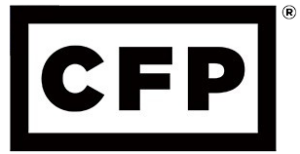Lately, I’ve had a number of clients and prospects ask how to pay for college. Not in the future – but RIGHT NOW. They’re past the point of choosing a different school, filing for financial aid, or building up college savings. The bill is in-hand! Here’s how to piece it all together:
Start Budgeting: If you haven’t been already, there is no better time to take a serious look at spending. You need to reallocate some discretionary expenses toward tuition. This may mean stay-cations, holding off on home improvement projects, and foregoing certain conveniences for the next few years. Yes, it means some sacrifice, but you’ll be back to normal soon enough.
Re-evaluate your retirement goals: I find that many of my clients have solely saved toward retirement. This is likely due to the convenience of employer plans, matching, and tax benefits. However, they’ve left themselves completely underfunded, if not bankrupt, for non-retirement goals. So far they’ve managed to fund short-term goals from cash flow – but let’s face it – college tuition is a doozy. If your retirement looks healthy or you’re comfortable working a bit longer than initially planned, it may make sense to temporarily re-direct retirement savings toward tuition.
Non-Student Debt: Depending on how the numbers are shaking out you may need to resort to debt so you can fund this expense over a longer period of time. Home Equity Lines of Credit are a popular option, but keep in mind they incur fees beyond just interest. Your 401(k) may also offer loan options that extend beyond hardship. There are a few reasons not to go this route, but in the right circumstances its worth considering. Lastly, I’ve begun to see lines of credit developed specifically for college funding. They are initially attached to the parents, but can eventually be handed off to the child after successfully obtaining employment. Inquire about these at your local bank.
529 Plans: Likely you do have some savings for college, just not enough to cover the whole bill. There’s no wrong or right time to draw from these accounts, but I would encourage you to divide it by the number of years in college and figure out a way to supplement the rest from what’s been suggested above. If you fully fund the first year or 2 of college from the 529s you’re going to have to cut back spending and scrounge for cash flow that much more in years 3 and 4. It won’t get any easier unless you’re expecting a guaranteed windfall or know you’re funding the difference with debt.
UTMAs: These accounts are technically owned by your children but aren’t turned over to their custody until the age of majority. In the meantime, you can utilize the balance to cover their expenses. If you’re counting on financial aid, utilize these accounts first since assets owned by a child are weighted more heavily than parental assets.
Direct Gift: A generous benefactor is in a position to directly pay tuition (meaning they are writing a check to the school – not your family) without it being considered a taxable gift for IRS purposes. This is an excellent opportunity for grandparents, in particular, to bring down their taxable estate value. Keep in mind, net worths of $2M+ are exposed to Massachusetts estate tax, home values in this area make that a potential for many seniors. If this feels like a tactless conversation, blame it on your financial planner. Also, if you have a financial aid package, hold off on this strategy until senior year (explanation below).
Grandparent Owned 529 Plans: The timing to take distributions from these in the past had been critical if your child is receiving financial aid. Funds taken from plans owned by grandparents, or non-parents, were not reported on financial aid applications but counted as income on the following year’s application. This infusion of income would dimish or disqualify the student from receiving aid for the following year. As of 2022, neither the asset or the distributions need to be included on the FAFSA. Woohoo! With that said, it’s still included on the CSS Profile. The CSS Profile is used on top of the FAFSA form by about 200 private colleges to award their institutional aid.
If your head is spinning, please reach out so we can create a plan of action together! 978-685-7526





This Post Has 5 Comments
Pingback: Everything Child-Related to the new "Secure Act" - North Andover Financial Planner | Powwow, LLC
Pingback: Elder Care and College Planning Can Create a Sticky Situation for The Sandwich Generation - North Andover Financial Planner | Powwow, LLC
Pingback: When Elder Care and College Planning Creates a Sticky Situation for The Sandwich Generation - North Andover Financial Planner | Powwow, LLC
Pingback: Everything Child-Related to the new "SECURE Act" - North Andover Financial Planner | Powwow, LLC
Pingback: Back to School Planning is More Expensive This Year - North Andover Financial Planner | Powwow, LLC